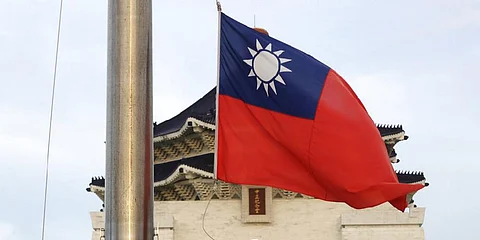

On 29 August, China published its so-called “2023 standard map” showing all of Arunachal Pradesh, Aksai Chin and other parts of Indian territories within its border. The map was released just days after Chinese President Xi Jinping had met with India’s Prime Minister Narendra Modi discussing resolving the boundary situation during the BRICS summit in South Africa. India’s Ministry of External Affairs has lodged a strong protest over the Chinese territorial claims through diplomatic channels.
China’s map also lays claim to the entire South China Sea, which has no doubt drawn strong protests from Philippines, Malaysia and Vietnam. China’s Foreign Ministry said that it’s a routine practice in China’s exercise of sovereignty in accordance with the law and hoped that relevant sides could stay objective and calm and refrain themselves from over-interpreting the issue. It would be easy for China to say so; however, China itself has never remained calm with respect to the territorial disputes with other countries. China not only includes the above disputed territories in its map, but also resorts to military tactics, escalating tensions at the China-India border and in the South China Sea. That’s what China means by remaining calm.
Apart from the aforesaid territories in India and the South China Sea, China also claims Taiwan as its territory, vowing to take control of Taiwan and refusing to renounce the use of force, despite never having ruled Taiwan. For decades, the people of Taiwan have remained calm in safeguarding the status quo of peace and stability across the Taiwan Strait. However, as China’s economic and military might has grown stronger, it becomes increasingly aggressive in flexing its military muscle to intimidate Taiwan, thereby threatening Taiwanese people’s democratic way of life. This includes sending warplanes and ships across the median line of the Taiwan Strait and encroaching into Taiwan’s air defense identification zones. It has also intensified gray-zone tactics, such as disinformation and economic coercion, in an attempt to wear down the Taiwanese people’s will to fight.
ALSO READ | The new map of borders and areas around China
China’s expansionism does not stop at Taiwan. China’s use of gray-zone activities in the East and South China Seas are designed to expand its power and substantiate its hawkish territorial claims. In addition to signing a security agreement with Solomon Islands in the South Pacific, China has been securing ports for future military use in the Indian Ocean.
China’s frequent use of military and economic tactics to intimidate Taiwan and other neighbouring countries in recent years has posed a formidable threat and challenge to security across the Taiwan Strait, in the Indo-Pacific region and the world. Ensuring peace and stability in the Taiwan Strait is in everyone’s best interest. Half of the world’s commercial container traffic passes through the Taiwan Strait each day. Taiwan produces the majority of the world’s semiconductors and plays a key role in the global supply chains. Any conflict in the area would have disastrous consequences for the global economy.
The leaders of the Group of Seven (G7) issued a joint communiqué from their summit in Hiroshima, Japan, on 20 May, reaffirming the importance of peace and stability across the Taiwan Strait as indispensable to security and prosperity in the international community. They also called for a peaceful resolution of cross-strait issues and expressed firm opposition to any unilateral attempts to change the status quo by force or coercion. G7 countries have taken concrete steps to express high regard for peace and stability across the Taiwan Strait for the third consecutive year.
While we can all agree that the war must be avoided, how to best do so requires inclusion, dialogue, and, most of all, unity. The United Nations remains the best platform for global discourse. UN officials speak often of joint solutions, solidarity, and inclusion in tackling the pressing issues of our time. Taiwan is more than willing and able to take part in these efforts.
However, Taiwan continues to be excluded from the UN due to China’s distortion of UN General Assembly Resolution 2758. This resolution neither states that Taiwan is a part of the People’s Republic of China (PRC) nor gives the PRC the right to represent the people of Taiwan in the UN and its specialized agencies. In fact, the resolution only determines who represents the member state China, a fact that the international community and China itself recognized following the relevant vote in 1971. The subsequent misrepresentation of Resolution 2758 contradicts the basic principles upheld by the UN Charter and must be rectified.
As a truly global institution, the UN can serve as a champion of progress. We call on the UN to uphold its principle of leaving no one behind by allowing Taiwan to participate in the UN system, rather than excluding it from discussions on issues requiring global cooperation. A good first step would be to allow Taiwanese individuals and journalists to attend or cover relevant meetings, as well as ensure Taiwan’s meaningful participation in meetings and mechanisms.
Allowing Taiwan to meaningfully participate in the UN system would benefit the world’s efforts to address pressing global issues and demonstrate the UN’s determination to unite for global peace at a critical juncture when the future of the world is at stake.

We are stronger together. Now is the time to act on this fundamental principle by including Taiwan.
(Richard Chen is Director-General, Taipei Economic and Cultural Center, Chennai. Views are his own.)
ALSO SEE: China's map mischief: What India must do now